Cast your minds way back to 2008. Land Rover was a purveyor of handsome but fairly ordinary go-anywhere SUVs, with a desirable Range Rover brand and an incoming influx of cash from soon-to-be owner Tata. It’s hard to imagine, but the company was as traditional as they come – I still remember the sound of all the monocles falling when the first Range Rover Sport came with Discovery underpinnings. How dare they!
But the fate of Land Rover was to change forever. At the Detroit Auto Show that year, it unveiled the striking LRX concept, a statement of intent from then-new design director Gerry McGovern. The compact soft-roader debuted a radical new design language and a novel all-wheel-drive hybrid powertrain (which, sadly, never made production), with the promise of it entering showrooms the following year.
Yeah right, we collectively said. But while it did take a little longer to get there than expected, the real thing blew all our minds. Adopting the Range Rover brand once Solihull saw how much money it could rake in, the 2010 Evoque was a faithful note-for-note recreation of the LRX, and it opened the door to a whole new world of buyers. It also informed the design of every single Land Rover since and established Range Rover as a proper standalone brand – a brand that now also includes the stunning Velar.
So, a landmark car, then. But even the most revolutionary vehicles can only stay around for so long – and so we have the new Range Rover Evoque. It’s built on a new platform, features the latest Land Rover tech, and is promised to not only be better to drive but also more frugal and more capable off-road. But is it all it’s been made out to be? We took a drive in gorgeous Greece ahead of the local launch to find out.
It’s safe to say that the new Evoque has a lot riding on its beefy shoulders. Over 770,000 of the old one found homes worldwide in just under ten years, making it an unqualified success. It even sold moderately well here – a country where Land Rover previously sold so few cars, a blue moon would’ve been more common.
Much of that had to do with the original’s bold styling. It looked like nothing else on the road, with its rising beltline, falling roofline, chunky wheel arches, and “tails” on the head- and tail lights inspiring a slew of imitators, both direct and indirect. It’s a design that’s been seared into everyone’s minds, so it’s no wonder the new one treads so faithfully down the same path.
At the same time, some things needed to be changed. For all its avant-garde-ness, I’ve always felt that the previous Evoque was a little bit of a mess visually. There were so many lines and design elements that looked contrived and took away from the sheer impact of the styling.
So for this year, the designers have taken a more minimalist approach, lifting more than a few cues from the Velar. The surfacing has been cleaned up, the lamps are slimmer and, just like on its big brother, you now have flush door handles that only pop up when you need them. It makes for a far more cohesive look.
To streamline the design still further, much of the black plastic cladding has been removed, giving the Evoque an even more car-like aesthetic. Slim black lines along the side break up some of the slab-sidedness this brings, while a gloss black strip links the quad rectangular tail lights. The sportier R-Dynamic trim level also introduces some copper-coloured highlights to add a little bit of jewellery.
The mild exterior redesign hides a wholesale revamp of the car’s underpinnings. While the previous Evoque could be accused of being an old Freelander in a party frock, the new one rides on the latest Premium Transverse Architecture (PTA), designed to accommodate electrified powertrains from the start.
Even with the new platform, the dimensions are largely identical – the car is nine millimetres wider, 14 mm taller and just one millimetre longer than before. However, the wheelbase has grown 21 mm to 2,671 mm, providing increased rear legroom as well as a 10% larger boot at 591 litres. The move to a new generation unfortunately also means that the pretty three-door body style has been discontinued. Sorry about that.
There’s also a new interior that again draws a lot of inspiration from the Velar. The uncluttered dashboard showcases arguably the car’s biggest party piece – the Touch Pro Duo infotainment system. The 10-inch upper touchscreen, which can be tilted to suit your liking, is as per the segment norm, but it’s the similarly-sized lower display that grabs your attention.
This is where various vehicle settings are clustered, eliminating most of the hard buttons and making for a clean, modernist aesthetic when everything is switched off. It’s great to look at, but use it once and it becomes clear this isn’t quite the utopian solution you might have hoped for.
There’s quite a steep learning curve here, because the screen shows not only the climate controls but also the various Terrain Response drive modes, and they’re all siloed into separate menu panes. The result is a cumbersome interface that requires you to look down and stab the display several times to get to a function that was previously just a button press away.
Thankfully, Land Rover hasn’t gone the whole hog on the touch-sensitive bandwagon, as the system still has twin physical knobs. These are context-sensitive, their functionality varying depending on what’s on display. There’s also an actual volume knob, which should placate some of the Luddites who might buy this car.
As for the upper interface, it works well enough, although it doesn’t have the speed or intuitiveness of BMW’s class-leading iDrive system. Still, all the important features are there as you’d expect, and crucially, it is available with Apple CarPlay and Android Auto compatibility.
Because the Evoque has such a tall beltline and slim glasshouse, seeing out is a bit of a challenge. Helpfully, Land Rover has introduced two new technologies to help with outward visibility, the first of which is ClearSight Ground View. This uses the feed from the 360-degree camera system to show an approximation of what is under the bonnet, helping you navigate difficult terrain – or simply avoid kerbing those precious wheels.
There’s also a ClearSight rear-view mirror which, at a flick of a switch, turns into a display that shows a live video feed of what’s behind. A feature that was first seen in the Lexus LS (and in the latest Toyota Alphard and Vellfire), it maintains an uncluttered view even if taller passengers are seated at the back, or if the boot is filled to the roof. It also usefully increases the field of vision to 50 degrees.
Elsewhere in the cabin, fit and finish is excellent, as you’d expect for a premium SUV. The car looks and feels plush, with plenty of leather and lots of soft-touch plastics everywhere you touch, although the surfeit of gloss black surfaces is a hotbed for dust, fingerprints and scratches. Land Rover is also offering buyers a variety of sustainable materials, such as wool, eucalyptus fabrics and a suede-like microfibre made out of discarded plastic bottle caps. However, our cars will still be upholstered in cowhide.
Under the familiar skin, the Evoque is made out of a mixture of high-strength steels and aluminium, making the body 13% stiffer than before. This, together with rigidly-mounted subframes, reduces noise and vibration intrusion into the cabin, making for a quieter ride. The suspension is made up of MacPherson struts at the front and a new integral link setup at the rear.
Power comes from 2.0 litre Ingenium turbocharged four-cylinder engines, a staple of Jaguar Land Rover’s current portfolio. In other markets, you can get the new Evoque with a diesel mill, as well as mild hybrid and plug-in hybrid powertrains – but we get none of those here.
Instead, we are offered a pair of conventional petrol variants, their names roughly corresponding to the amount of horsepower on tap. The P200 makes 200 PS at 5,500 rpm and 320 Nm of torque from 1,300 to 4,500 rpm, while the P250 churns out 249 PS and 365 Nm. A ZF nine-speed automatic gearbox is fitted as standard, as is Efficient Driveline all-wheel drive with Driveline Disconnect – the latter disengages the rear axle when cruising to save fuel, reengaging it to increase traction if needed.
Having sampled the P250 on the outskirts of Athens, I can tell you that the car won’t be quite as accelerative as the output figures would suggest. That’s largely down to the weight – at nearly 1.9 tonnes, the Evoque is a heavy, heavy car, even by SUV standards.
And it feels it. The car’s responses are somewhat languid and it lacks the forceful low-down shove that one would expect from a modern, turbocharged premium vehicle. Don’t get me wrong, this is not a slow car – it gets from zero to 100 km/h in a respectable 7.5 seconds. It just doesn’t feel that fast, and the engine needs to be worked hard to reach anything approaching brisk.
It’s a good job, then, that even when you rev it out and extract every last sliver of its performance, the engine remains impeccably smooth and impressively quiet. Most of the time, in fact, it’s all but inaudible, and the cabin is also well isolated from road and wind noise.
This serenity is backed by the gearbox, which operates discreetly behind the scenes with quick and imperceptible shifts – although, like most transmissions with this many speeds, it is a little hesitant to respond to sharp throttle inputs. It’s at its best in automatic mode, being a touch sluggish with the paddles.
As befits such an expensive car, the new Evoque can be optioned with various hardware aimed at improving the driving dynamics, including adaptive dampers and – on the most powerful variants – a real torque-vectoring rear axle. Neither of these is fitted on Malaysian-spec cars, nor the test cars we drove in Greece, although brake-activated torque vectoring remains standard-fit.
Shorn of these technologies, the Evoque’s handling isn’t as life-affirming as the design. It’s certainly capable in the corners but never feels anything other than tall and hefty for its size. Keep it within its limits, however, and it does a decent – if not exactly fun – job.
The steering isn’t the quickest or the most feelsome out there, but it is reasonably accurate and guides the car faithfully down your intended route, so long as you don’t rush it. Body control is also good, there is a noticeable but not excessive amount of roll, and the all-wheel-drive system makes for a reassuring drive – even if out-and-out grip from the all-season tyres is modest.
Despite the standard suspension, the Evoque is still very comfortable, complementing its impressive refinement. Riding on the same 20-inch wheels as Malaysian-spec units, the test car smoothened out most of the bumps on rural Mediterranean roads, with only the largest ones filtering through into the cabin. It’s a trade-off for the car’s less-than-nimble handling, which I’m sure most customers will be happy with.
Off the beaten track, the Evoque has a number of tricks up its sleeve, despite being resolutely road-biased. It has short front and rear overhangs, a ground clearance of 212 mm and a maximum water-wading depth of 600 mm. The second-generation model also introduces the Terrain Response 2 system, which adds an Auto mode that adjusts the engine and transmission settings to suit the prevailing driving conditions.
Traversing through the various off-road sections during the drive, the Evoque did not break a sweat, which said as much about the car’s capabilities as it did about Land Rover’s tacit admission that most owners won’t take it anywhere outside of Mont Kiara. There were a few stream crossings, some gravel roads, the occasional ruts and a number of steep downhill sections that challenged the car’s hill descent control.
But there were no huge rocks to scale, no ramps to test axle articulation, and no rivers to ford. That said, not once did the wheels break traction throughout which, given the less advanced all-wheel-drive system fitted, meant that the Evoque’s ultimate abilities were very much untested. In any case, most owners can rest assured that the car will go damn near anywhere they will ever dare tread, much like a good dive watch.
So where does that leave us? We can go on and on about how good (or otherwise) the new Range Rover Evoque is, but the reality is most people bought the previous car because of the way it looked, and many more will continue to do so with this one. The good news is that the latest model is still striking to look at, classier than before and, to my eyes, better looking.
For the rest of us, the Evoque makes the strongest argument for itself yet. It feels like the luxury product it aspires to be – it’s supremely refined, it deals with even the roughest roads with aplomb, and the interior is simply plush. Sure, it’s also priced like a luxury product: the one you really want, the P250 R-Dynamic, is nearly double the price of a Volvo XC40.
But just like a Hermès scarf or a tailored Saville Row suit, the Evoque isn’t supposed to appeal to the rational side of your brain. It’s designed to stir your most primal instincts, activate the want-one lust that will make the well-heeled amongst you to go out and buy one, despite the price. And unlike those two things, you won’t have to panic if you get it dirty.
The new Range Rover Evoque is now on sale in Malaysia, priced at RM426,828 for the P200 and RM475,398 for the P250 R-Dynamic. Browse full specifications and equipment on CarBase.my.
Looking to sell your car? Sell it with Carro.

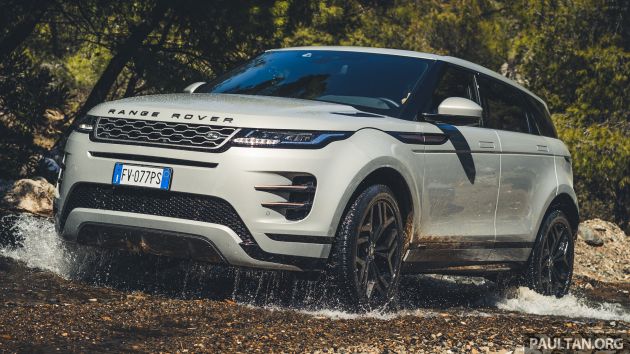
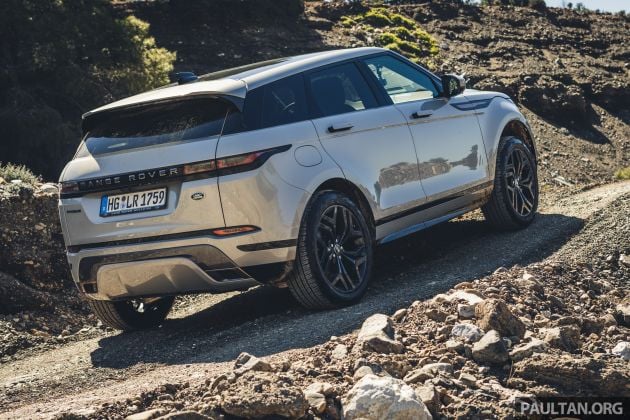



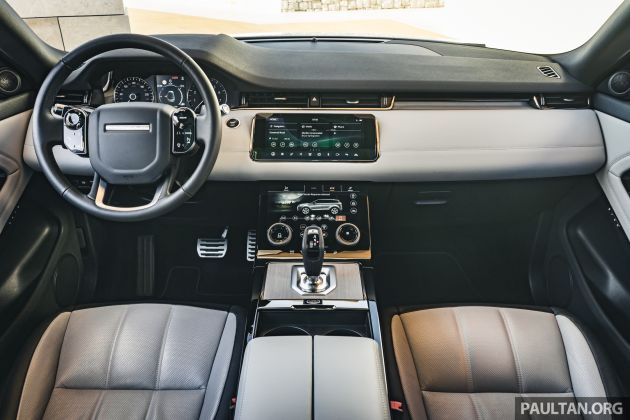



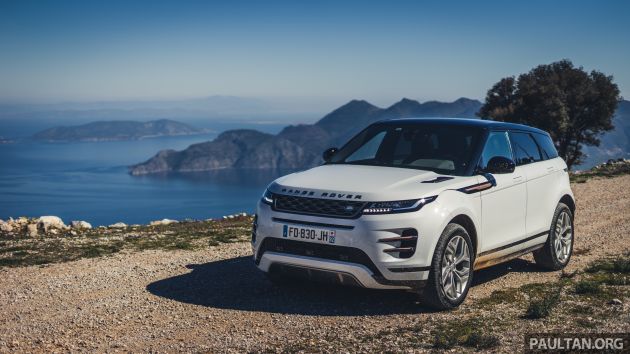
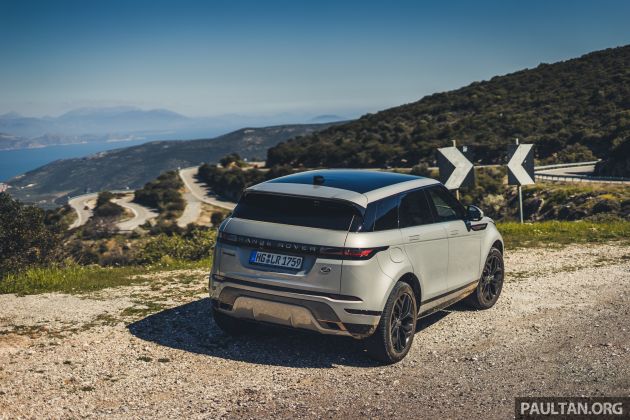
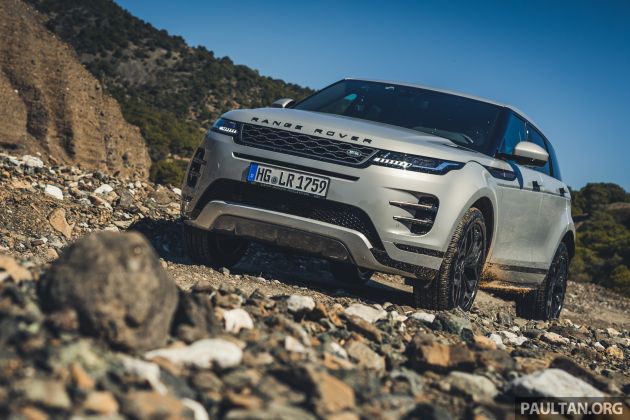
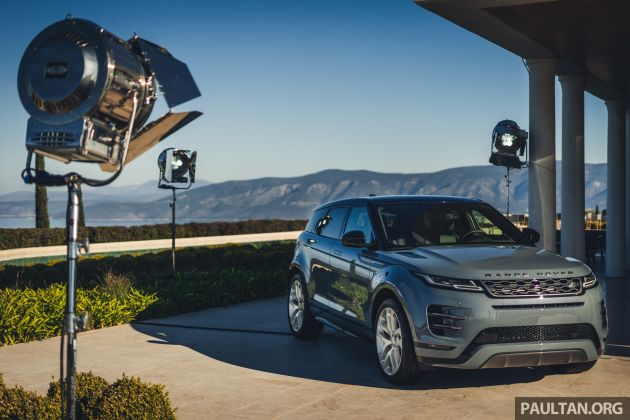

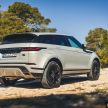

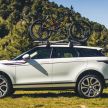
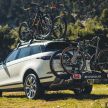


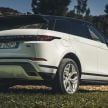

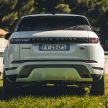
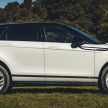
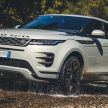
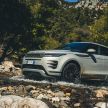


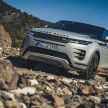
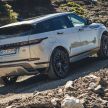

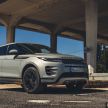


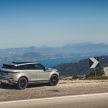
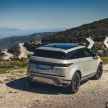
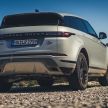

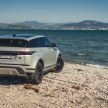
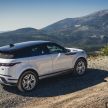






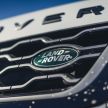
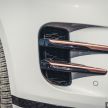
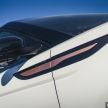
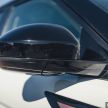
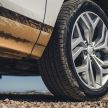
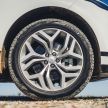
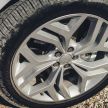
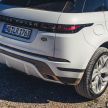
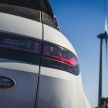
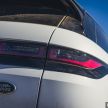
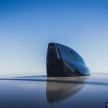
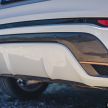

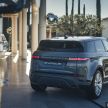
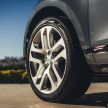
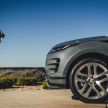
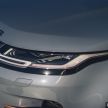
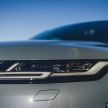




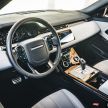
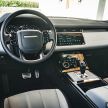
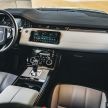
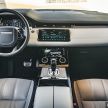
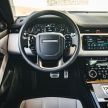
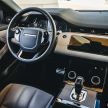
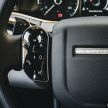
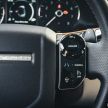
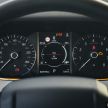

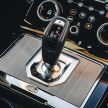
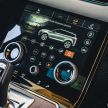
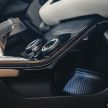
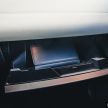
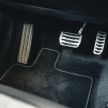
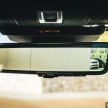

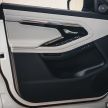
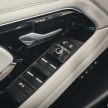

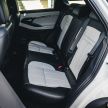
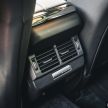
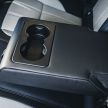
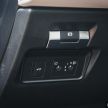
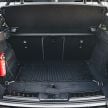

















(Like) 2020 Range Rover Evoque.
(Dislike) Proton X70 Premium
good
The only crime of this SUV it’s the RM400k price tag!
Hmmm in the UK this Evoque goes head on with the X3 but over here for the same price you can get the all new X5 45e which not only has good spec but with the performance to match.
it’s better to get a Honda CRV turbo for a much cheaper cost and use the remaining money to buy a house. it’s not much slower and yet fuel efficient.
In the uk this evoque is priced and position within the xc40 range. Here landrover malaysia spec the options high and put it in position above other luxury make to make it special and niche. 250hp above 7s to 100 for close to half a mill… that is steep.
Another overbearing tank for the over-privileged ladies-who-lunch.
Actually, I really like this car!